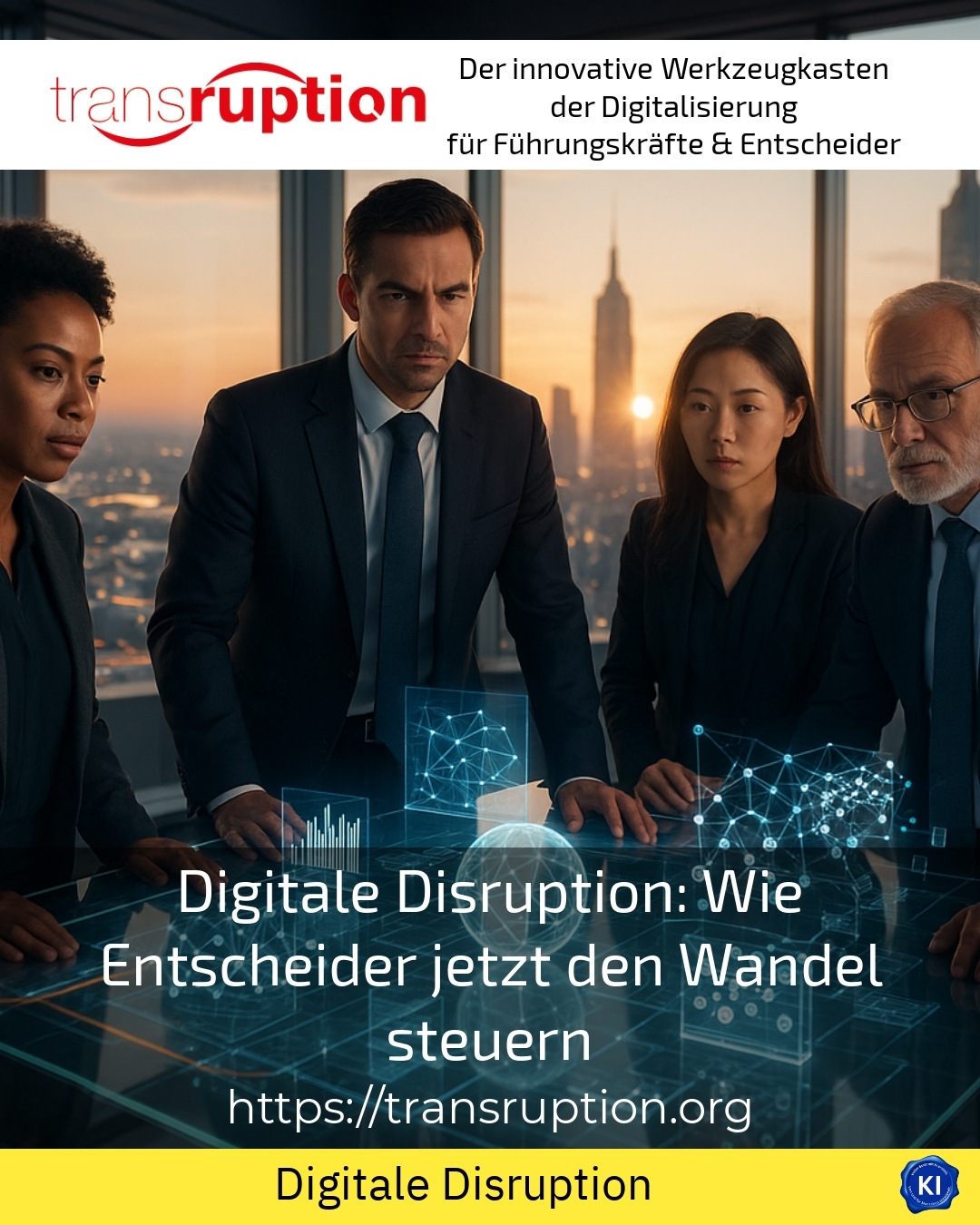Digital disruption is fundamentally changing almost every industry today. It is crucial for decision-makers not only to understand this change, but also to actively manage it. Digital disruption means radicalism: new technologies and digital business models are disrupting existing market structures and simultaneously opening up opportunities for innovation and growth.
Understanding digital disruption: What's behind it?
Digital disruption describes the profound upheaval triggered by digital innovations in traditional business models[1][3]. This is not just about the introduction of new technologies, but about a complete reorganisation of value creation and market mechanisms. Different industries are experiencing this development in their own way, but the basic principle remains the same: old structures are being called into question and often replaced by more agile, digitally supported business models.
Companies are faced with the challenge of proactively shaping this digital disruption rather than simply reacting to it. The decisive factors here are the early recognition of trends, the willingness to change and the ability to flexibly integrate new digital solutions.
Examples from various industries
Digital disruption can be seen in numerous industries through practical examples that show how innovation is revolutionising markets:
In the mobility sector, Uber has challenged traditional taxi companies by connecting drivers and passengers directly via a digital platform. This makes it possible to react quickly and flexibly to demand - the traditional taxi industry is under massive pressure[4][7].
In the accommodation sector, Airbnb has revolutionised the hotel industry by making private accommodation easily accessible. Customers benefit from greater choice and personalised offers[4][6].
In the entertainment sector, Netflix has fundamentally changed access to films and series. Streaming on demand is increasingly replacing traditional DVD rental shops or linear television[1][7].
The retail sector is also undergoing profound disruption: Amazon has redefined the consumer with its online marketplace, combining convenience, a wide variety of products and fast delivery[2][5]. This change is forcing traditional retailers to digitise their business models.
BEST PRACTICE at the customer (name hidden due to NDA contract) A medium-sized retail company benefited from our support in the development of a digital marketplace. Thanks to the early launch, customers were increasingly addressed online and traditional sales channels were further developed digitally. This proactive management of digital disruption facilitated the transformation and opened up new sources of revenue.
Digital technologies as drivers
Artificial intelligence, the Internet of Things and blockchain are some of the key technologies that are driving digital disruption. For example, financial service providers are using digital payment systems such as PayPal or cryptocurrencies to supplement or replace traditional banking services[5].
In the healthcare sector, smart assistance systems are emerging that make diagnosis and treatment more efficient. Here, too, we can see how digital disruption is permanently changing entire industries.
In the communications sector, Slack has replaced email communication in many companies with interactive, centralised platforms, facilitating cross-team collaboration[11].
How decision-makers can manage change
Successful management of digital disruption relies on several key strategies:
- Recognising digital trends and disruptive technologies at an early stage
- Promoting an agile corporate culture that is open to change
- Investing in digital skills and tools to flexibly adapt internal structures
- Close involvement of employees and clear communication of the change processes
- A willingness to experiment and allow innovation beyond established business models
In practice, transruption coaching is recommended as support for digital disruption projects. Coaching supports decision-makers in recognising new paths, overcoming obstacles and implementing sustainable changes[7].
BEST PRACTICE at the customer (name hidden due to NDA contract) A manager in the manufacturing industry received targeted coaching to initiate digital innovation processes. The support helped to reduce resistance in the team and prepare them for the change. As a result, digital pilot projects were successfully implemented.
Customer orientation as a success factor
Today's customers are playing an active role in the digital transformation. They expect personalised experiences and fast response times. Companies that take these expectations into account can position themselves better in disruptive markets[13].
One example is the use of big data to anticipate individual customer needs and create customised offers. As a result, both customers and companies benefit from greater satisfaction and loyalty.
My analysis
Digital disruption is not a phenomenon that companies can wait and see. It requires active shaping through determination, flexibility and a willingness to innovate. Success can be achieved by utilising technical developments at an early stage, changing the corporate culture and deepening customer understanding. Transruption coaching can be a valuable support here. This is the only way to manage change processes in a sustainable and targeted manner.
Further links from the text above:
[1] Digital disruption - definition, explanation and tips - nerdly
[2] 7 successful examples of disruptive innovations - AhaSlides
[3] Digital disruption - Innolytics
[4] Disruptive innovation - 17 examples - Industrie-Wegweiser
[5] Digital disruption - IT-P Lexicon
[6] Disruptive business models: creating new markets
[7] Digital disruption: How to successfully navigate as a decision-maker
[11] Digital disruption and megatrends - Maximum Digital
[13] Digital disruption - Digitalisation Glossary - Morgen Beratung
For more information and if you have any questions, please contact Contact us or read more blog posts on the topic TRANSRUPTION here.















